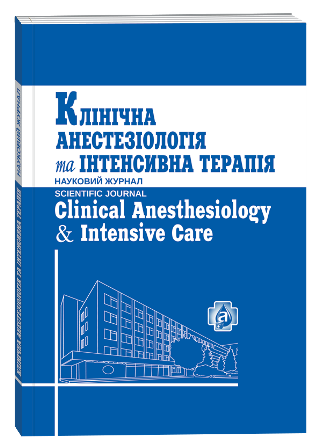PEDIATRIC PATIENTS WITH IMPLANTED LEFT VENTRICULAR ASSIST DEVICES END EXPIRIENSE OF PERSONALIZATION OF TREATMENT IN EARLY POSTOPERATIVE PERIOD
DOI:
https://doi.org/10.31379/2411.2616.14.2.5Keywords:
mechanical circulatory support, continuous flow left ventricle assist device, congestive heart failure in children.Abstract
For adult patients, devices of a continuous flow of mechanical support of blood circulation completely prevail over pulse ones, which is more than 90%. With the constant miniaturization of devices among pediatric cardiologists, the number of proposals for the use of continuous-flow VAD in children is growing. According to the first PediMACS report, approximately half (54%; 109 out of 200) of registered long-term devices are continuous-flow devices. This article describes the current state of the children’s system of a continuous flow of mechanical support for blood circulation and evaluates the prospects for its future direction. The experience and strategy of the Silesian Center for Heart Diseases in the early postoperative period was very similar to that used in patients after Fontaine’s operation, including special tactics of respiratory support, adding nitric oxide or leaving the chest open after the start of circulation support. Despite aggressive medical support, a certain part of the patients had right ventricular, which required temporary mechanical support to restore blood flow in the pulmonary circulation and increase LV preload. Early biventricular VAD correlates with better survival compared to a delay in its use. Thus, a thorough preoperative risk assessment of right ventricular failure is required for implantation of a biventricular VAD or for heart transplantation.
References
Prospective trial of a pediatric ventricular assist device / C.D. Fraser [et al.] // N Engl.J.Med. –2012. – Vol.367. – P. 532–541.
A multicenter study of the HeartWare ventricular assist device in small children / O. Miera [et al.] // J Heart Lung Transplant. – 2016. – Vol.35. – P.679–681.
Early outcomes with HeartWare HVAD as bridge to transplant in children: a single institution experience / G. Ferro [et al.] // Artif.Organs. – 2016. – Vol.40. – P.85–89.
HeartWare ventricular assist device as bridge to transplant in children and adolescents / M.A. Padalino [et al.] // Artif Organs. – 2014. – Vol. 38. – P.418–422.
An extended role of continuous flow device in pediatric mechanical circulatory support / E. Pemg [et al.] //Ann Th orac Surg. – 2016. – Vol.102. – P.620–627.
Outpatient Management of Intra-Corporeal Left Ventricular Assist Device System in Children: A Multi-Center Experience / M. Schweiger [et al.] //American Journal of Transplantation. – 2015. – Vol.15. – P.453–460.
Temporary percutaneous right ventricular support using a centrifugal pump in patients with postoperative acute refractory right ventricular failure after left ventricular assist device implantation / A. Haneya [et al.] // Eur.J.Cardiothorac Surg. – 2012. – Vol.41. – P.219–223.
Early planned institution of biventricular mechanical circulatory support results in improved outcomes compared with delayed conversion of a left ventricular assist device to a biventricular assist device / J.R. Fizpatrick [et al.] // J Thorac Cardiovasc Surg. – 2009. – Vol.137. – P.971–977.
Is severe right ventricular failure in left ventricular assist device recipients a risk factor for unsuccessful bridging to transplant and post-transplant mortality / J.A. Morgan[et al.] // Ann Thoracic Surg. – 2004. – Vol.77. – P.859–863.
Short-term mechanical circulatory support for recovery from acute right ventricular failure: Clinical outcomes / A.W. Cheung [et al.] // J Heart Lung Transplant. – 2014. – Vol.33. – P.794–799.
Extracorporeal membrane oxygenation support for right ventricular failure aft er left ventricular assist device implantation / J.Riebandt [et al.] // Eur J Cardiothorac Surg. – 2018. – Vol.53. – P.590–595.







